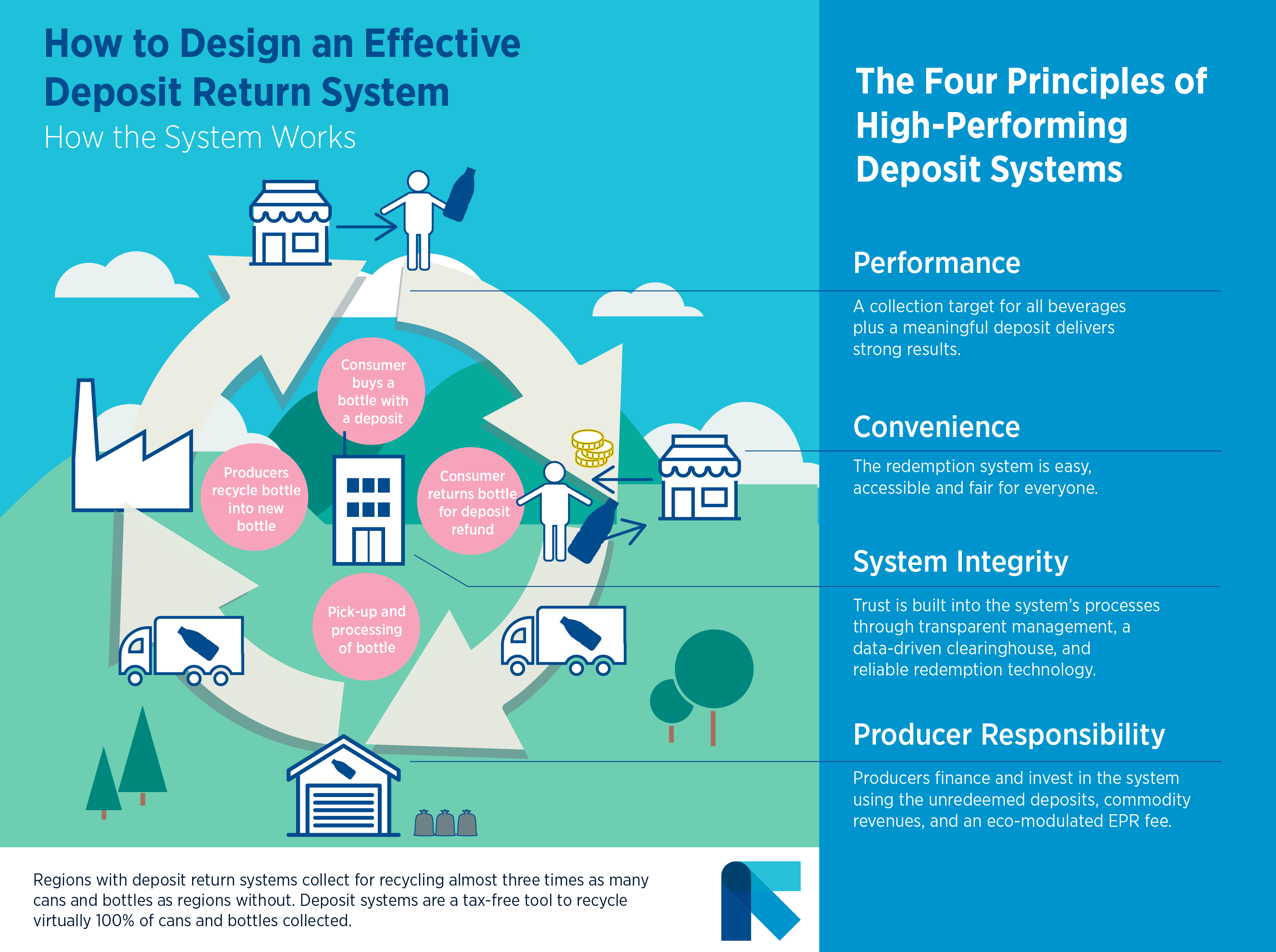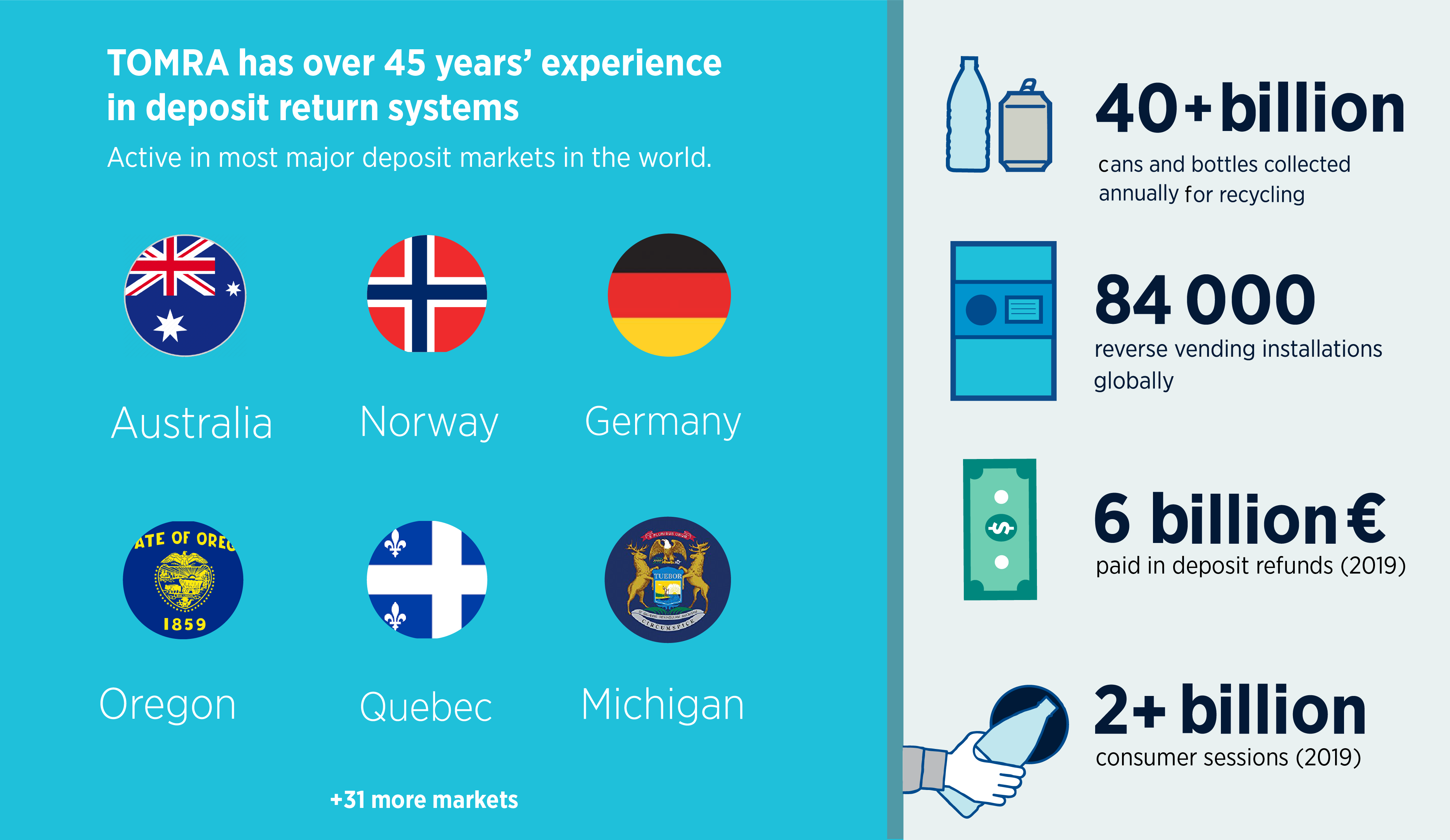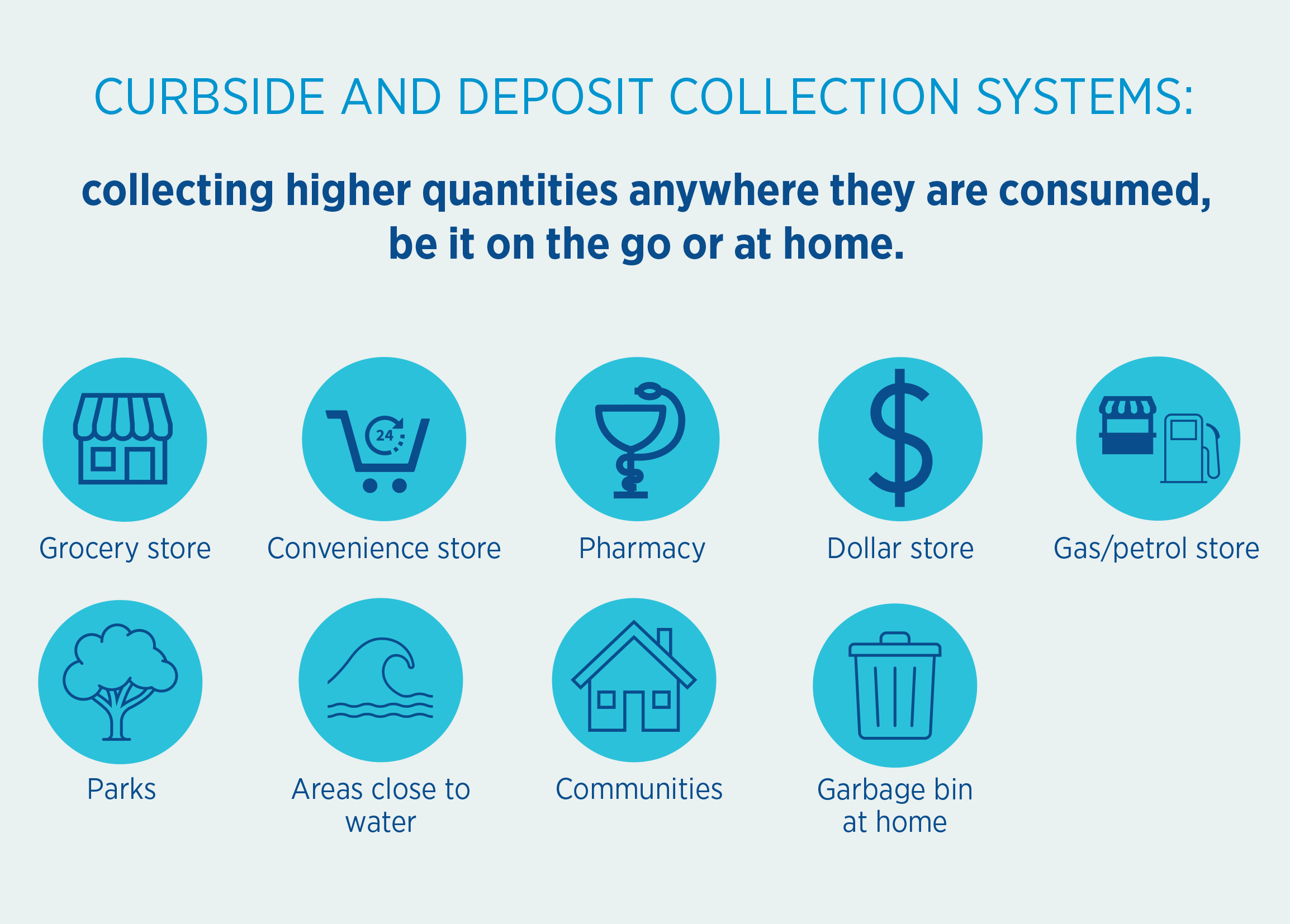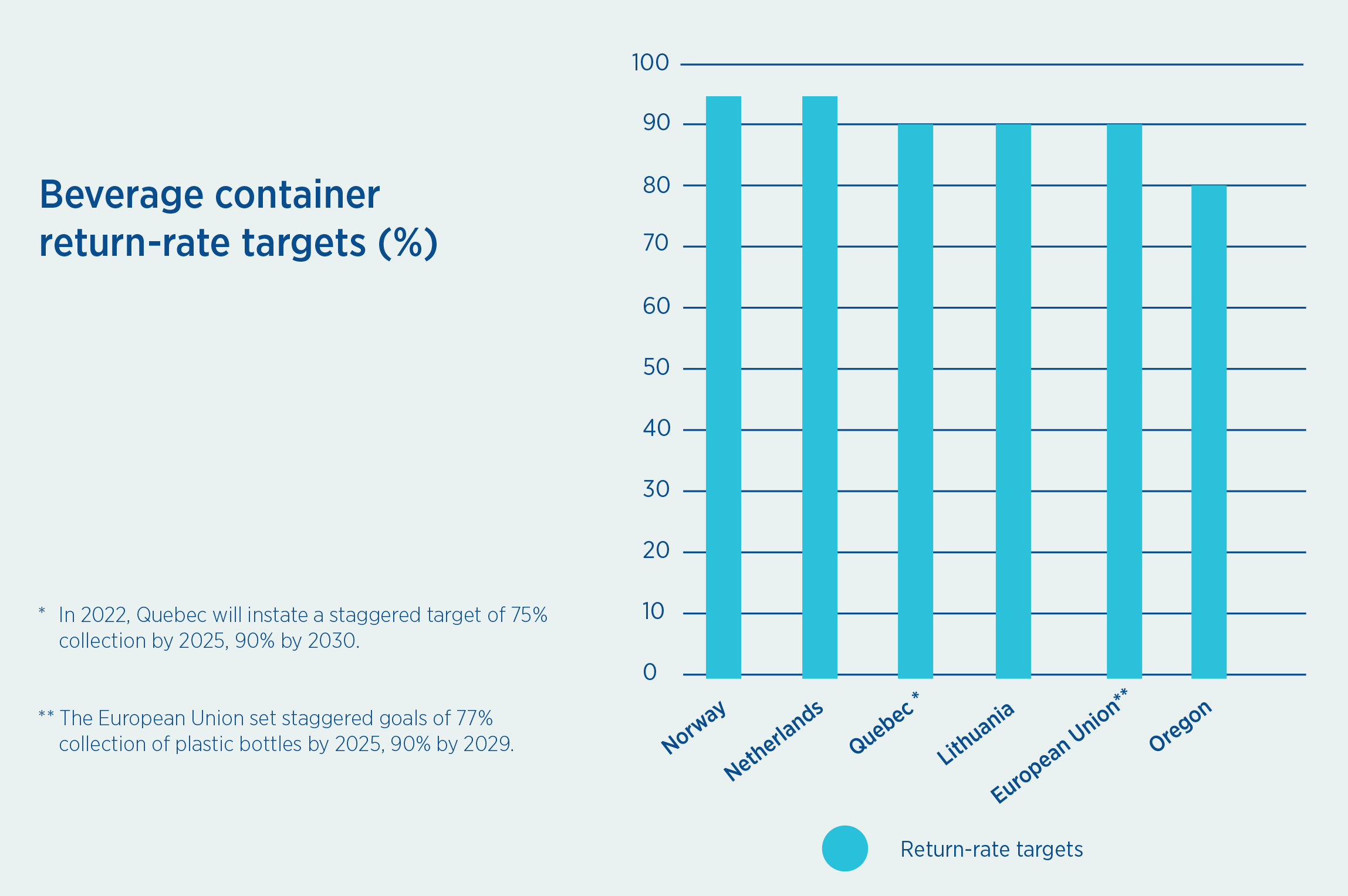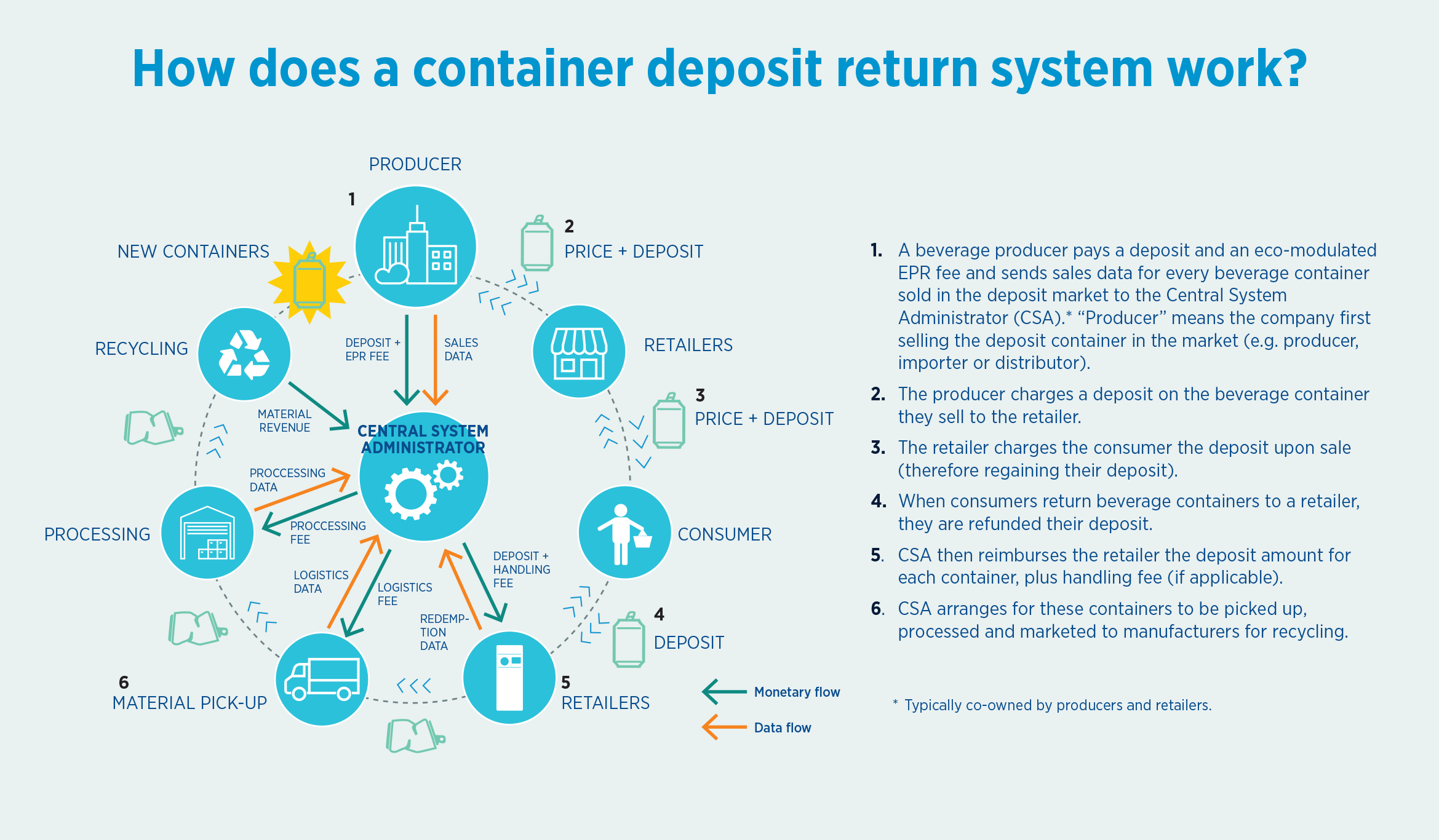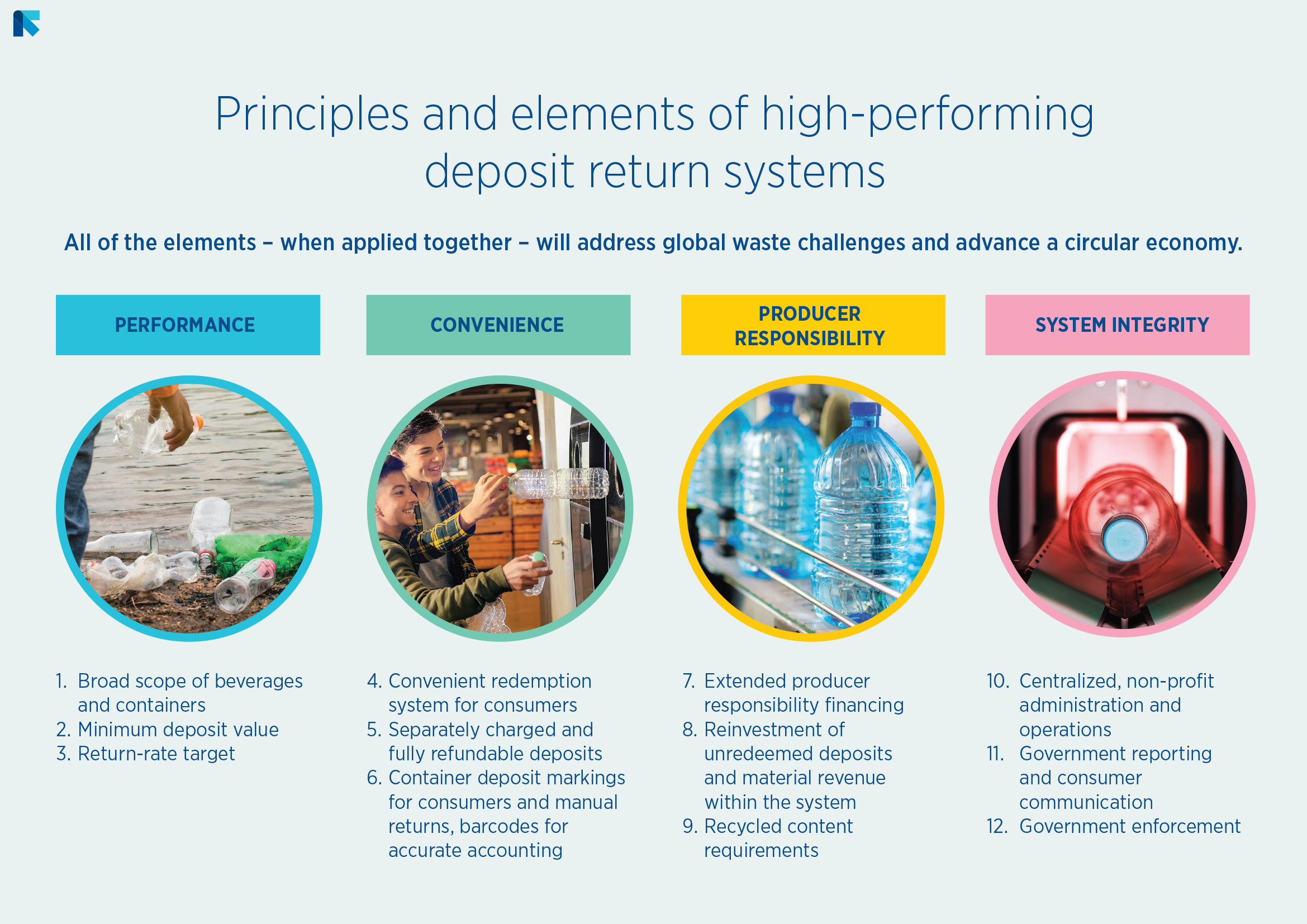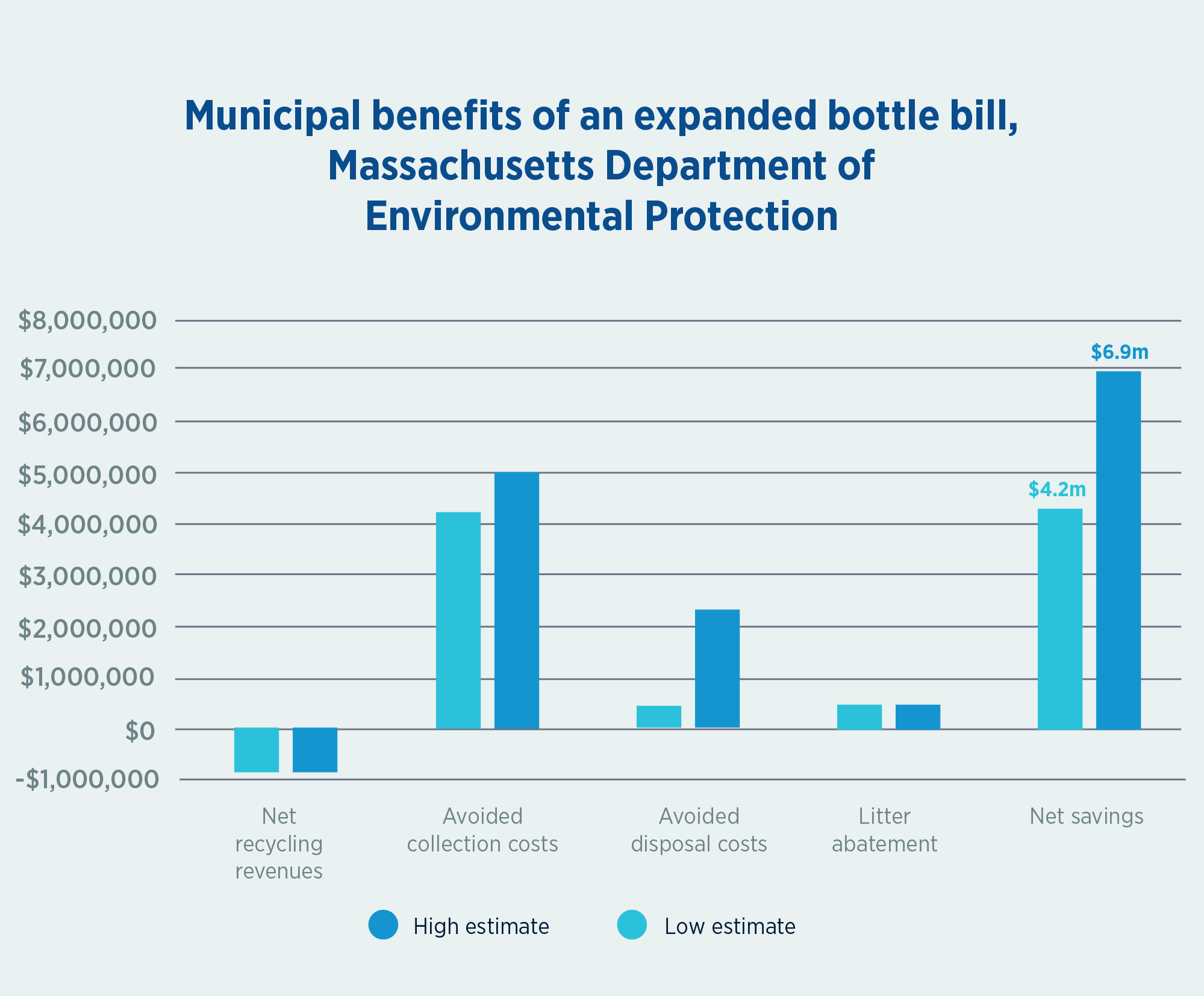Deposit Return Systems
High performing Deposit Return Systems significantly accelerate the circularity of beverage containers like plastic bottles and aluminum cans, with recovery rates of 90% and above.
Explainer Video – What is a Deposit Return System?
Deposit Return Systems (DRS), also known as deposit return schemes or deposit refund systems, are a proven solution to address litter caused by consumer packaging waste.
What is a Deposit Return System? Extended version
In this extended video, you will learn how deposit return systems (DRS) work, how they are financed, how they can help solve plastic pollution from consumer packaging waste, boost recycling rates and the circularity of food-grade recyclates, and more.
FREE DOWNLOAD
Rewarding Recycling: Learnings from the World's Highest-Performing Deposit Return Systems
Download TOMRA’s new white paper revealing best practices in designing deposit return systems for beverage container recycling.
Deposit return systems play a vital part in preventing bottles and cans from ending up in oceans, streets and landfills, by offering a financial incentive for consumers to return used containers for recycling.
Demand for single-use cans and bottles continues to grow every year. Most of these containers are used only once before being discarded, creating waste that contributes towards plastic pollution. Deposit return systems (DRSs) play a vital part in preventing this, helping to drive a circular economy by making bottle and can recycling both simple and rewarding.
Why DRS with return to retail boosts performance ?
Deposit return systems with a return to retail model are paramount for achieving higher return rates – especially when combined with automated technology.
TOMRA Talks Circular
Listen to DRS experts on our podcast, which aims to affect real change with real conversations.
How does a deposit return scheme work?
Container deposit return systems work by adding a deposit on top of the price of a beverage, which is refunded to the consumer when they return the empty bottle or can for recycling. Think of it as buying the beverage, but borrowing the container. Afterwards, beverage distributors arrange for the collection and ultimate recycling of the containers.
These programs are also known as container deposit systems or bottle bills. Deposit return systems are typically established through legislation passed by state or national governments.
Why are deposit return schemes successful?
Deposit return systems provide a financial incentive to return drink containers. This communicates containers have a value, rather than being trash. DRSs have shown to reduce beverage litter 30-84%, depending on deposit value. While the U.S. national recycling rate has stagnated for decades around 34%, high-performing deposit return systems routinely collect 90% or more of containers for recycling.
By separating bottles and cans for recycling through a deposit system, beverage containers are collected without contamination from other types of waste in a household recycling bin. This means containers can be recycled into new bottles and cans (rather than lower-quality uses like landfill cover), reducing reliance on raw materials to produce new beverage containers. This is known as closed-loop recycling, which TOMRA calls keeping materials in the Clean Loop.
Deposit return systems: "What if..?"
What if the problem of bottles and cans polluting our neighborhoods, waterways and oceans is actually the result of poorly-designed waste management systems?
What can deposit return schemes deliver?
When a bottle is returned to a reverse vending machine, often as part of a deposit return system, it can be recycled back into another plastic bottle. Deposit return systems answer calls to address plastic pollution, increase recycling, and move away from traditional linear take-make-dispose models in preference of a circular economy. Deposit return systems have been shown to combat litter, reduce costs, create green jobs, and bring social and economic benefits.
Deposit return around the world
Over 40 regions around the world operate a deposit return system. These include Norway, Germany, Lithuania, several Australian states, 10 US states and nearly all of Canada. Regions such as Scotland, England and Wales, Portugal and more states in Australia are set to introduce deposit return in the coming years.
Calls are increasing for other countries to follow suit, with the United Nations Environment Program in 2017 encouraging nations to implement deposit return systems. The European Union's Single-Use Plastics Directive sets targets for member states to collect 90% of all plastic bottles by 2029, which experts say is difficult to achieve without a container deposit system.
DRS Infographics
View infographics explaining DRS visually below.
How Convenience Leads to High-Performing Deposit Return Systems
Take a deep dive into how high-performing systems make redemption convenient, and why convenience is key to an effective DRS.
In the fight against plastic waste, DRS delivers
A case for the inclusion of Deposit Return Systems in the UN Treaty on plastic pollution.
TOMRA is an industry supporter of the global treaty on plastic pollution, and we believe that to achieve maximum results, DRS should be included in the agreement.
-
The UN Treaty for plastic pollution
On March 2nd, 2022, more than 170 states endorsed the beginning of negotiations for a legally binding UN treaty on plastic pollution. A global agreement that will address the full lifecycle of plastic, from design and production to waste management and beyond. This is an historic step on the road towards staving off an environmental disaster, but not the last.
At TOMRA, we believe these negotiations should include effective measures to prevent plastic packaging from being littered, burned, and buried in landfills. High performing Deposit Return Systems significantly accelerate the circularity of beverage containers like plastic bottles and aluminum cans, with recovery rates of 90% and above. As such, these systems stand well above many other measures in keeping plastic in circulation and out of the environment. -
Plastic pollution is one of the greatest challenges we face today
And beverage containers are the most ubiquitous form of plastic pollution. Demand for these containers shows no sign of slowing down but, while there is no silver bullet to tackle the problem, there is an holistic approach we can take. An approach which includes tried and tested solutions, technological innovation, and a dedicated international legal framework to facilitate global participation.
-
Deposit Return Systems: prevent, reduce, reward
DRS enables us to accelerate the transition towards a circular economy where used beverage containers are not wasted, but kept in circulation for as long as possible, then fed back into the system, again and again. Not only does DRS prevent litter and reduce the number of raw materials used in beverage containers, but it rewards consumers for playing their part. Win-win-win.
-
Consumer and industry demand for solutions like DRS
Consumers are moving away from throwaway culture and single-use plastics. Industrial sectors and waste management companies now see waste as a resource with the potential to create new revenue streams. Society and markets understand and embrace efforts to keep materials in the loop for as long as possible.
-
How DRS drives circularity
Incentivized return → increased collection
DRS works by adding a deposit on top of the price of a beverage bottle or can. Incentives like this tell consumers that their containers have value. The financial reward also increases the chances of those customers returning their used containers. Once these containers are returned, beverage distributors can ensure that they are collected and recycled. The success of such a system depends on the deposit value. The more the deposit, the higher the chances of return.
Separate collection of plastic bottles and cans → no contamination
Through a DRS, bottles and cans are separated for recycling using reverse vending machines (user-friendly machines with advanced sensors that recognize the unique properties of containers and prevent fraud in the system). Because of this, beverage containers are collected without contamination from other types of waste in household recycling bins.
No contamination → bottle to bottle recycling
Without contamination, containers can be most efficiently recycled into new bottles and cans. In this way, DRS provides the beverage industry, who struggle to manufacture containers with more recycled content due to a lack of high-quality, food-grade material, with optimal resources for the re-production of containers.
In fact, the higher the collection rate, the higher the quality of the materials in the loop, meaning the more times that material can be used in new containers. For every 100 virgin bottles produced, a DRS with a 90% collection rate makes it possible to produce a total of 208 bottles! In Germany, the collection rate stands at 98%.Increased bottle to bottle recycling → less reliance on raw materials
Because more bottles are created using recycled material, the number of raw materials used decreases substantially, thus slowing down our reliance on those raw materials to produce new beverage containers.
Fewer raw materials used → less CO2 emitted
Recycled bottles and cans have a
much smaller carbon footprint than
those made from raw materials. In
fact, recycling saves up to 80% of the
energy used to extract and process
raw materials. When recycled materials replace raw materials in container
production, the greenhouse gas emissions associated with creating new
beverage containers drop significantly. -
Plastic pollution doesn’t have borders
The fact is, regulations aren’t coordinated across nations, and they lack a focus on the full lifecycle of plastics. What's more, many large polluters still do not have regulations at all. At the same time, businesses struggle with a fragmented and unpredictable policy landscape that makes it difficult to plan effectively and act efficiently. There are no uniform global standards or policies that guide the industry. That needs to change for DRS to become even more effective.
-
DRS should be included in the global treaty on plastic pollution
The positive impact that DRS has had on plastic pollution is evident, but the possibilities for these systems to expand circularity even further if nations committed to work together across value chains, are endless.
Inclusion in the UN Treaty would:
1. Provide clear definitions of key terms (example: packaging, single-use, recyclable, reusable, etc.).
2. Provide clear standards and compliance metrics (example: transparent reporting, progress measurements, data collection, etc.) across the value chain.
3. Provide clear targets and coordinated action plans across the plastic value chain.
4. Ensure global participation, from brand owners all the way to consumers.
.png?width=788&height=200&name=tomra_lockup_h_1cw_png%20(1).png)




-2.jpeg?width=1671&height=1014&name=Pauline%20Bergan_TOMRA%20(2)-2.jpeg)





.jpg)



